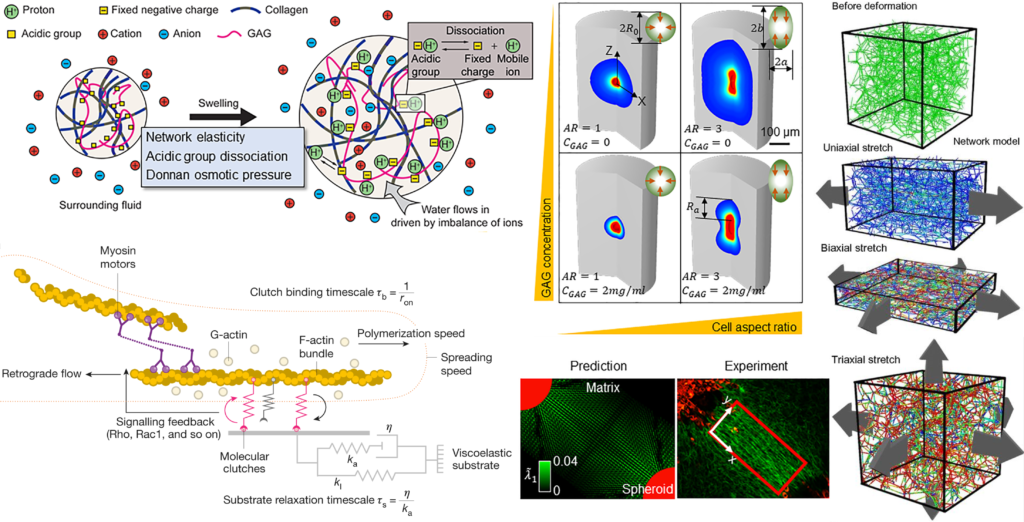Mechanobiology of Cell Microenvironment

Cells respond to differences in the viscoelastic properties of their environment by sensing forces over distances much greater than their size. Such long range mechanosensing has been demonstrated in varied settings as development, cancer, wound healing and fibrosis. However, how cells sense stiffness remains unclear, in part because of a lack of quantitative data that define exactly what cells sense, especially in vivo. Our group works on characterizing non-linear (strain-dependent) elasticity, viscoelasticity, and mechanical plasticity in normal and diseased tissues, in particular their studying their contribution to cell stiffness sensing and behavior. We develop both discrete fiber network and continuum simulations to uncover how the ECM can mediate long range cell-cell communication, impact cellular contractility, and reorganize in response to cell activity.
Relevant contributions and publications
X. Chen, D. Chen, E. Ban, K.C. Toussaint, P.A. Janmey, R.G. Wells, and V.B. Shenoy
Glycosaminoglycans modulate long-range mechanical communication between cells in collagen networks
PROCEEDINGS OF THE NATIONAL ACADEMY OF SCIENCES, 119 (15) e2116718119, 2022
O. Chaudhuri, J. Cooper-White, P.A. Janmey, D.J. Mooney, and V.B. Shenoy
Effects of extracellular matrix viscoelasticity on cellular behaviour
NATURE, 584, pages535–546, 2022
E. Ban, H. Wang, J. M. Franklin, J. T. Liphardt, P. A. Janmey, and V. B. Shenoy
Strong Triaxial Coupling and Anomalous Poisson Effect in Collagen Networks
PROCEEDINGS OF THE NATIONAL ACADEMY OF SCIENCES, 116(14): 6790-6799, 2019